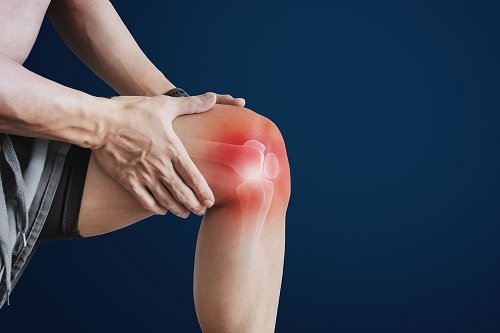PRP Treatment For Osteoarthritis Knee
Platelet-Rich Plasma (PRP) treatment for osteoarthritis of the knee is a regenerative therapy that aims to alleviate pain, reduce inflammation, and potentially promote the healing of damaged knee joint tissues. Osteoarthritis is a degenerative joint condition characterized by the breakdown of cartilage in the knee joint, leading to pain, stiffness, and reduced mobility. PRP therapy has gained popularity as a non-surgical option for managing knee osteoarthritis.
PRP, or Platelet-Rich Plasma, treatment for osteoarthritis in the knee is a medical procedure that aims to alleviate pain and potentially improve joint function in individuals suffering from knee osteoarthritis.

Symptoms of Osteoarthritis of the Knee:
Pain: Persistent knee pain, especially during or after activity, is a hallmark symptom. Pain may worsen with weight-bearing activities like walking, climbing stairs, or standing for prolonged periods.
Stiffness: Knee stiffness, particularly in the morning or after periods of inactivity, is a common symptom. It can make it challenging to move the knee joint fully.
Swelling: The knee may appear swollen and feel warm to the touch due to inflammation in the joint.
Crepitus: Some people with knee osteoarthritis experience a crackling or grating sensation (crepitus) when moving their knee joint.
Decreased Range of Motion: Osteoarthritis can lead to a reduction in the knee’s range of motion, making it difficult to fully extend or flex the joint.
Causes of Osteoarthritis of the Knee:
Age: The risk of knee osteoarthritis increases with age, as the cartilage that cushions the joint tends to wear down over time.
Joint Overuse or Injury: A history of knee injuries, such as ligament tears or fractures, can increase the likelihood of developing osteoarthritis.
Obesity: Excess body weight places added stress on the knee joints, which can accelerate cartilage degeneration and the onset of osteoarthritis.
Genetics: A family history of osteoarthritis may predispose an individual to the condition.
Gender: Women are more likely than men to develop knee osteoarthritis, particularly after menopause.
PRP treatment for osteoarthritis of the knee
Blood Collection: The process begins with the collection of a small amount of the patient’s own blood, typically from their arm. This blood is then processed to separate the platelets and growth factors from other components like red blood cells.
PRP Preparation: The collected blood is centrifuged to concentrate the platelets. The resulting platelet-rich plasma contains a higher concentration of growth factors and other bioactive proteins that are believed to have healing and regenerative properties.
Injection into the Knee: The concentrated PRP is then injected directly into the affected knee joint, typically guided by ultrasound or fluoroscopy to ensure precise placement. The goal is to deliver the growth factors and platelets directly to the damaged tissue within the knee joint.
Healing and Pain Relief: Once injected, the growth factors in PRP are thought to stimulate tissue repair and regeneration. They may also have anti-inflammatory effects, reducing pain and inflammation in the knee joint.
Benefits of PRP Treatment for Osteoarthritis Knee:
Non-Surgical: PRP therapy is a minimally invasive, non-surgical treatment option, which can be appealing to individuals who want to avoid more invasive procedures like knee replacement surgery.
Pain Relief: Many patients experience significant pain relief and improved joint function after PRP treatment.
Potential for Cartilage Repair: PRP’s regenerative properties may stimulate the healing of damaged cartilage within the knee joint.
Reduced Inflammation: PRP has anti-inflammatory properties, which can help reduce swelling and discomfort in the knee.
Minimal Side Effects: Since PRP is derived from the patient’s own blood, the risk of allergic reactions or adverse reactions is minimal.
